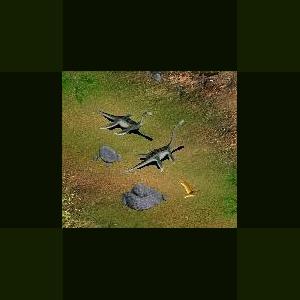About This File
Ceresiosaurus
Ceresiosaurus, meaning "Lizard of Ceres", is an extinct genus of aquatic sauropterygian reptile belonging to the nothosaur order. It was about 4 m (13 ft) long and its fossils have been found in Europe, and was named by Bernhard Peyer in 1931.
Ceresiosaurus existed during the middle Triassic period during the Anisian stage.
Ceresiosaurus was much more elongated than its relatives, and had fully developed flippers with no trace of visible toes. The finger bones in its flippers had multiplied (hyperphalangy) and elongated, giving the reptile much longer flippers than most nothosaurs. Ceresiosaurus's flippers greatly resembled those of the later plesiosaurs, an aquatic reptile family of which the nothosaurs were an early offshoot. Also noteworthy of Ceresiosaurus was that its skull is the shortest known of any nothosaur, giving it an appearance that made it the most plesiosaur-looking of the nothosaurs.
Although possessing a long neck and tail, Ceresiosaurus may not have been a reptile that swam via undulation; analysis of the bone structure in regards to the hips and powerful tail suggest that it instead propelled itself through the water much like a penguin. The evidence of pachypleurosaurs in the preserved stomach of Ceresiosaurus remains lend credence to the theory of it being a fast swimmer.
Olivier Rieppel suggested that Ceresiosaurus is a synonim of Lariosaurus



Recommended Comments
Create an account or sign in to comment
You need to be a member in order to leave a comment
Create an account
Sign up for a new account in our community. It's easy!
Register a new accountSign in
Already have an account? Sign in here.
Sign In Now